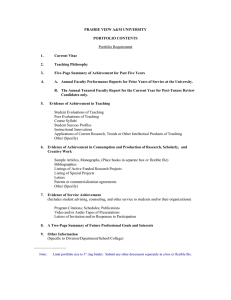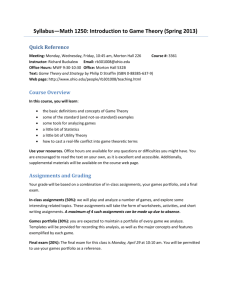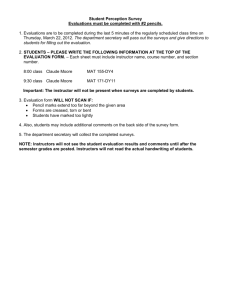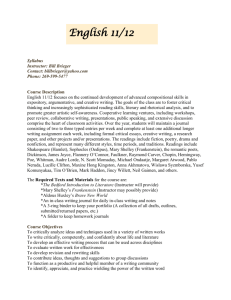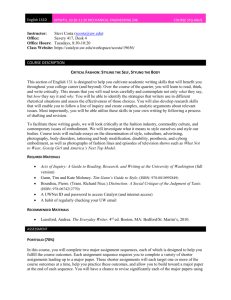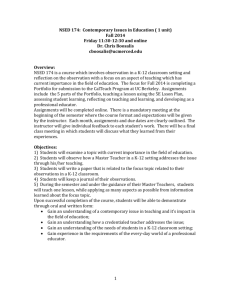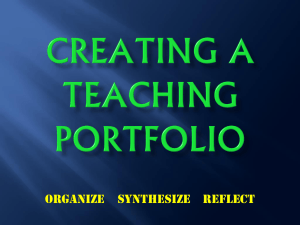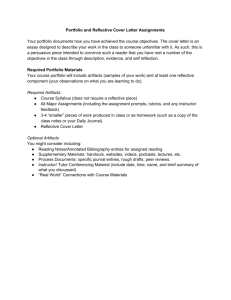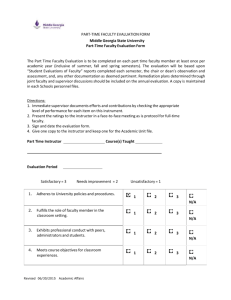Teaching Portfolio Worksheet for Teaching Philosophy
advertisement
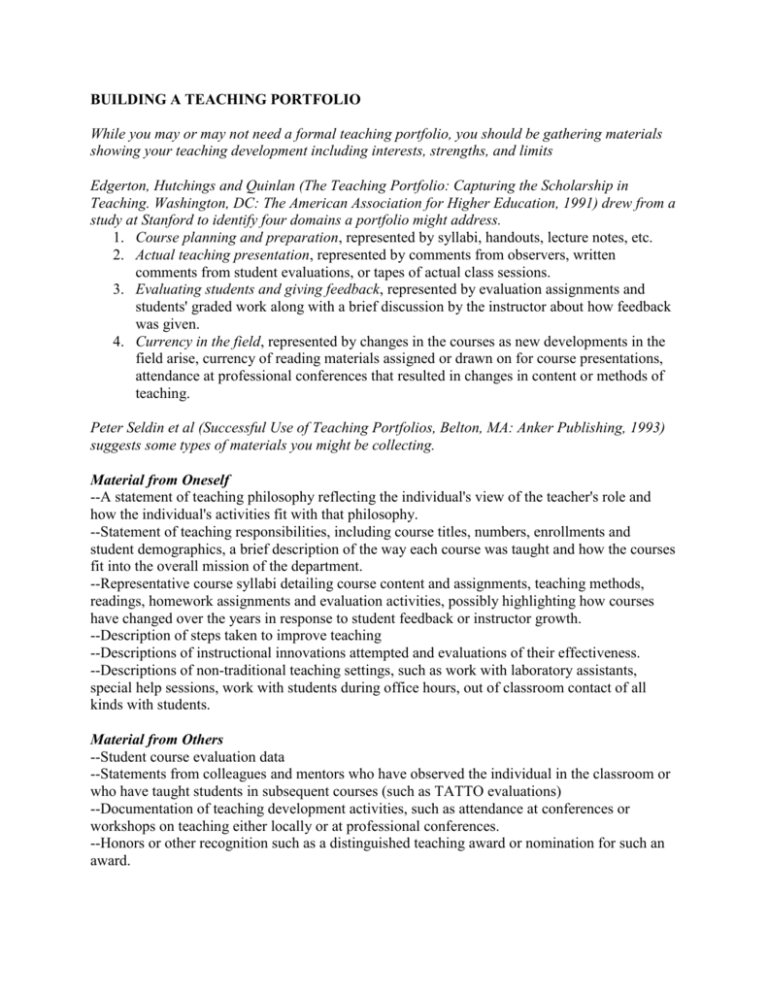
BUILDING A TEACHING PORTFOLIO While you may or may not need a formal teaching portfolio, you should be gathering materials showing your teaching development including interests, strengths, and limits Edgerton, Hutchings and Quinlan (The Teaching Portfolio: Capturing the Scholarship in Teaching. Washington, DC: The American Association for Higher Education, 1991) drew from a study at Stanford to identify four domains a portfolio might address. 1. Course planning and preparation, represented by syllabi, handouts, lecture notes, etc. 2. Actual teaching presentation, represented by comments from observers, written comments from student evaluations, or tapes of actual class sessions. 3. Evaluating students and giving feedback, represented by evaluation assignments and students' graded work along with a brief discussion by the instructor about how feedback was given. 4. Currency in the field, represented by changes in the courses as new developments in the field arise, currency of reading materials assigned or drawn on for course presentations, attendance at professional conferences that resulted in changes in content or methods of teaching. Peter Seldin et al (Successful Use of Teaching Portfolios, Belton, MA: Anker Publishing, 1993) suggests some types of materials you might be collecting. Material from Oneself --A statement of teaching philosophy reflecting the individual's view of the teacher's role and how the individual's activities fit with that philosophy. --Statement of teaching responsibilities, including course titles, numbers, enrollments and student demographics, a brief description of the way each course was taught and how the courses fit into the overall mission of the department. --Representative course syllabi detailing course content and assignments, teaching methods, readings, homework assignments and evaluation activities, possibly highlighting how courses have changed over the years in response to student feedback or instructor growth. --Description of steps taken to improve teaching --Descriptions of instructional innovations attempted and evaluations of their effectiveness. --Descriptions of non-traditional teaching settings, such as work with laboratory assistants, special help sessions, work with students during office hours, out of classroom contact of all kinds with students. Material from Others --Student course evaluation data --Statements from colleagues and mentors who have observed the individual in the classroom or who have taught students in subsequent courses (such as TATTO evaluations) --Documentation of teaching development activities, such as attendance at conferences or workshops on teaching either locally or at professional conferences. --Honors or other recognition such as a distinguished teaching award or nomination for such an award. Products of Teaching --Samples of student work along with the professor's feedback to show the range of student performance and how the instructor has dealt with it. --Student journals compiled during the semester and reflecting student growth in a wide range of areas. Some Items that Occasionally Appear --Descriptions of curricular revisions, including new course projects, materials, and class assignments. --Self-evaluation of teaching-related activities. --Contributions to, or editing of a professional journal on teaching in the discipline. --Service on professional society committees or University committees dealing with curriculum or teaching issues. --Participation in off-campus activities related to teaching in the discipline, such as working with local community groups in educational campaigns. --Descriptions of how non-traditional materials are used in teaching. SOME QUESTIONS FOR REFLECTION ON TEACHING (keep these in mind during your teaching assistant and associate ships as material to use in a statement of your teaching philosophy and in comments on your teaching experience and approach in application letters for teaching fellowships and jobs) Why am I a teacher? What do I teach the way I do? What motivated me to select a career path that includes teaching? What is my personal definition of a great teacher and what experience formed that definition? What do I believe about learning and teaching? How do I approach learning? What does learning look like when it happens? When learning does not happen, what has gone wrong? How do I hope that students are changed by experiencing my course? What do I want students to wonder about as a result of taking my course? What do I want my students to know and be able to do when they leave my course? How do I approach issues of difference—different experience, different backgrounds, different ages, different learning styles, etc.? What role do I think critical thinking/reading/writing skills play in my classroom? What role do I want different instructional media and technologies to play?
